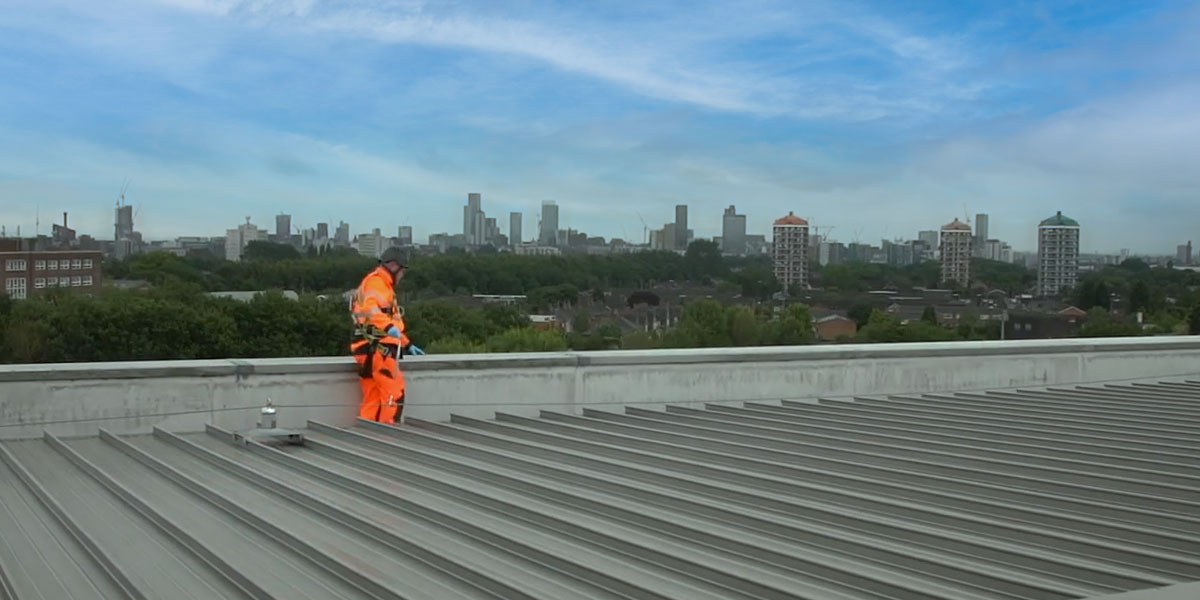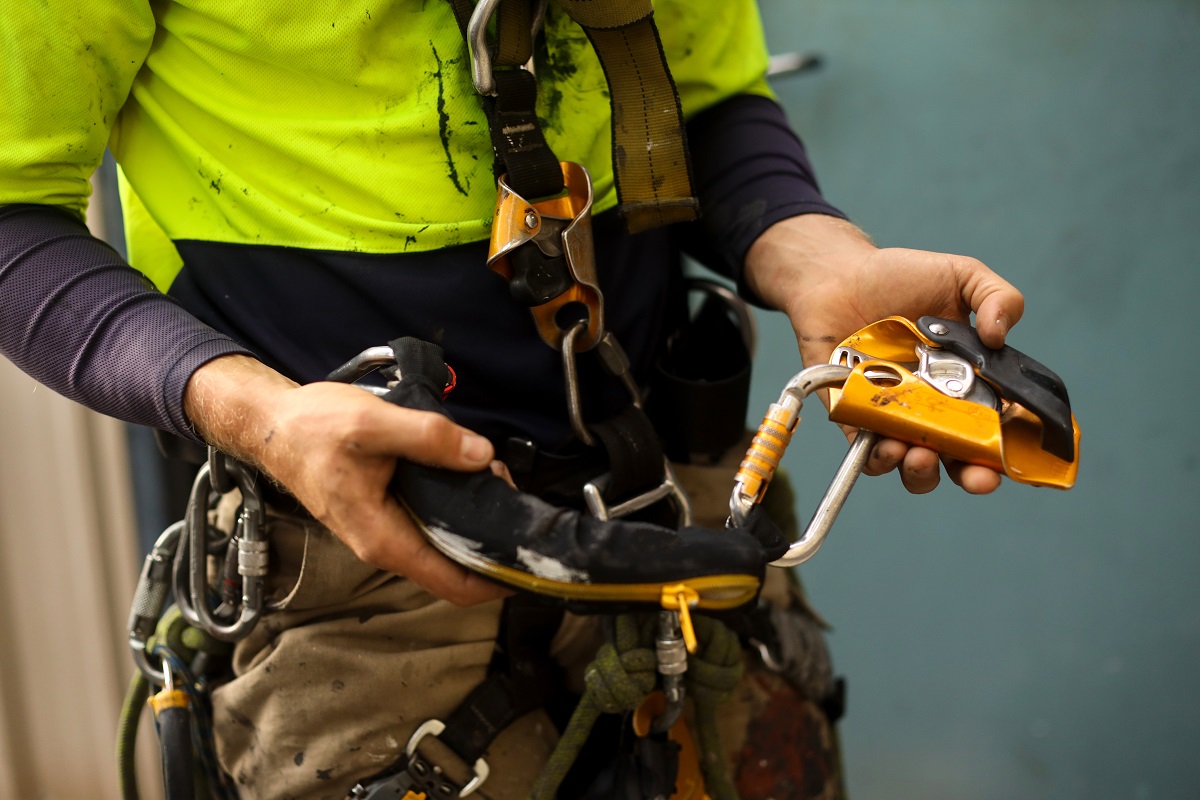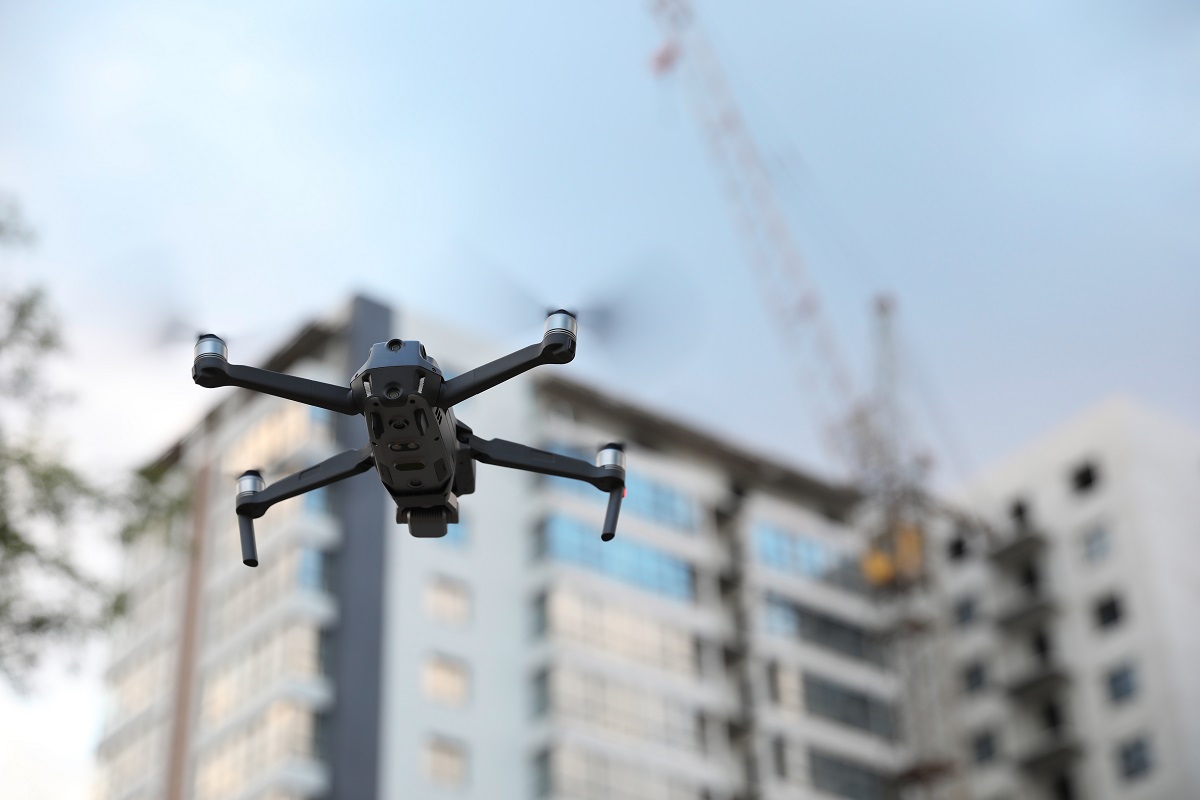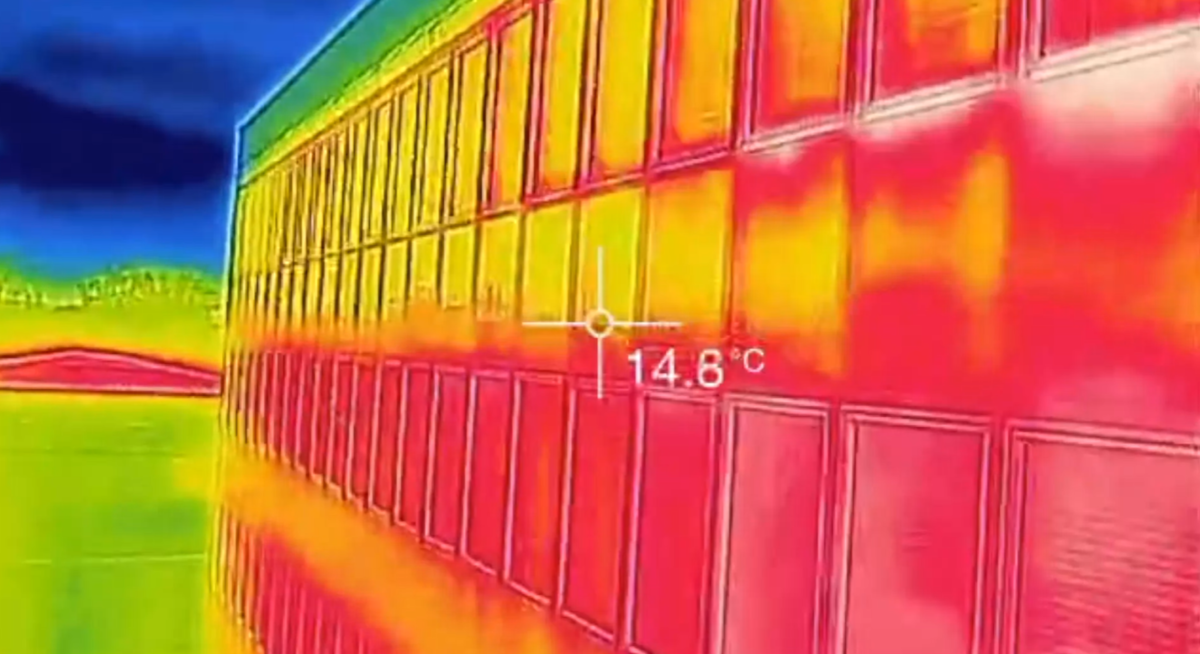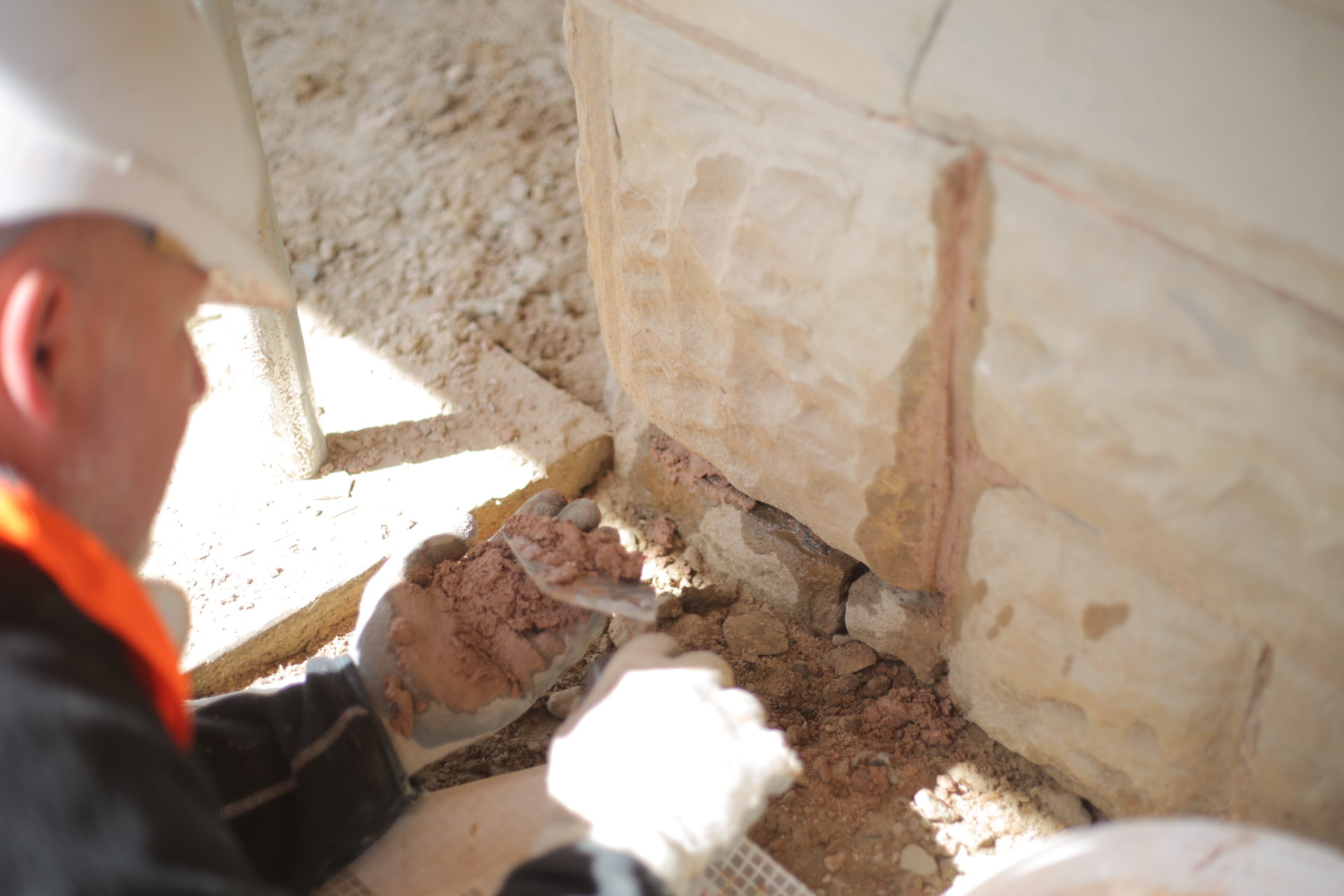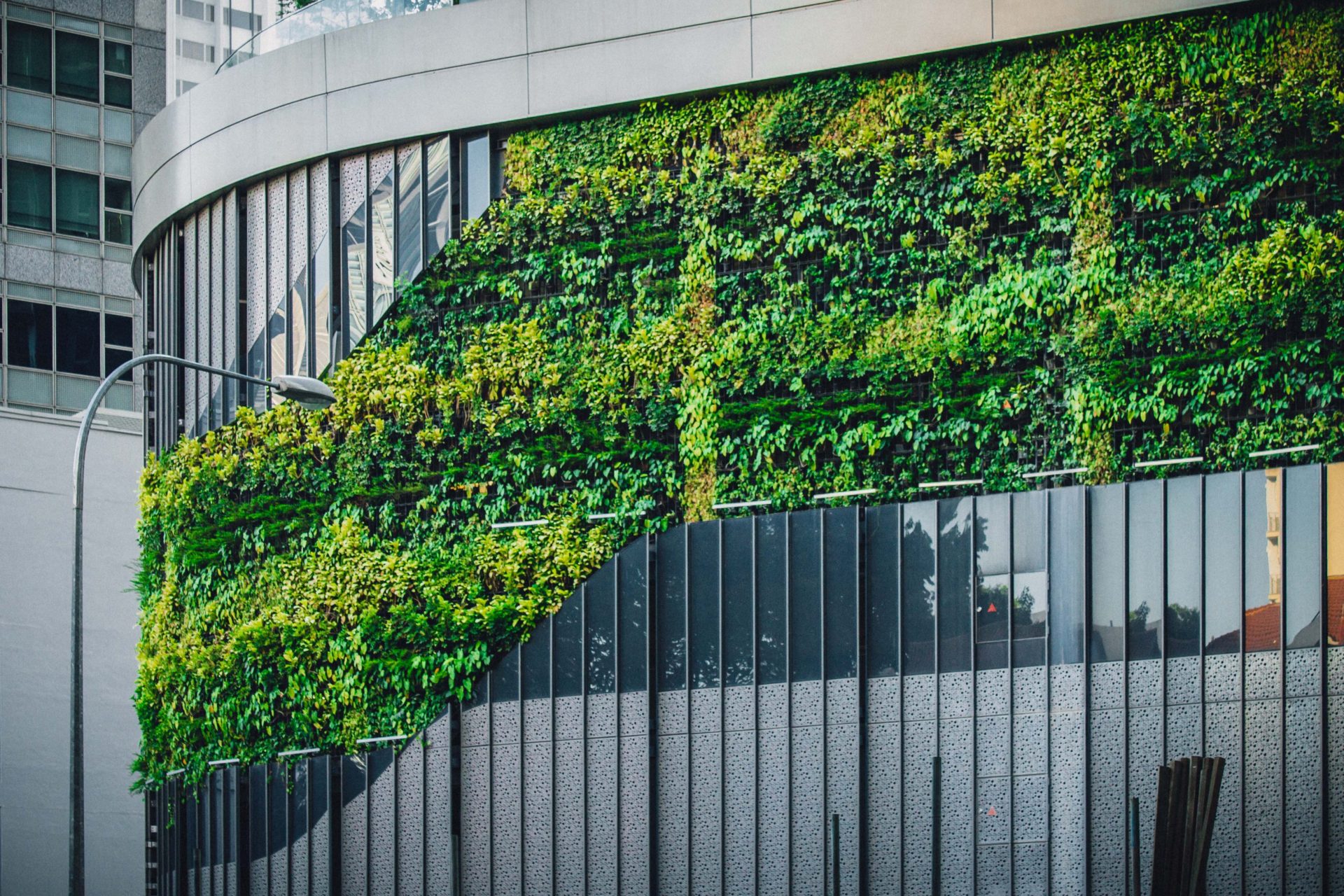Dec scanning is used for the purposes of testing a roof that does not have a conductive element in it, or to detect moisture trapped below the surface. A deck scanner will perform where a wet or dry test will not work.
How does it work?
The Dec scan transmits an electrical charge into the roof and measures the return, the machine does all this while being pushed along and converts the impedance it encounters onto a meter to show where there is a wet area below the membrane. This does not find defects directly but indicates there is moisture in the system and therefore a closer visual inspection and physical inspection may be necessary.
When using the Dec scanner the power level is set depending on the build-up of the roof and the moisture can be measured down to a depth of 150mm. The Trammex machine will not work on EPDM roofs because the surface has a conductive element. The machine can be calibrated using core samples to then map the level of moisture across an entire roof.
Benefits and limitations
A Dec scanner can also be used to identify areas of roof that may need stripping up when being refurbished rather than simply stripping and replacing the whole roof, thus saving time and money on the project.
The limitations of the Dec scanner are weather (it will not work on a wet surface or in rain) and the thickness of the roof. The user has to be aware that the machine can only work to a depth of 150mm but many modern roofs contain over 200mm of insulation.
For the purpose of leak detection, the depth will not be an issue because we are looking for leakage pathways from the membrane down and the insulation will have to be wet from the top to the deck.
Advantages
- Works on non-conductive roof build ups
- It can identify water trapped in construction or under roof surfaces
- Large areas can be covered in a limited time
- Works on nearly all membranes
Disadvantages
- Insulation cannot be foil faced
- Limited by depth it can scan. Approximately 150-170mm
- Roof membrane has to be dry
- Will not work on EPDM or some Butyl Rubber roofs
Summary
An effective tool to check if a roof needs stripping up to replace or an overlay and a very useful way to determine if there are any defects on an otherwise non electronically testable roof build up. Dec scanning has the same limitations as other electronic testing with conductive membranes and is also dependent on weather conditions.
At Building Transformation our solutions help improve the water integrity of your building. From roofs, to windows, parapet walls, gutters, and cladding. Our team of specialists and engineers can provide you with a detailed picture of your building’s current issues, risks, and overall health. We provide leak investigation, condition surveys, roof corrosion treatment, repair, and ongoing roof maintenance plans for commercial or retail buildings and warehouses.
Or, if you simply need technical support, we can provide an overview of our approach to helping you resolve your roof or façade related issues. Contact a member of our team today on 01234 964016.


